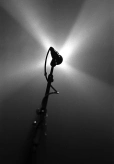PJ Harvey
When I moved to UK, 10 years ago, I had two dream concerts: PJ Harvey and Tom Waits. Both achieved.
With PJ Harvey I did better, I saw and photographed her multiple times.

To write about PJ Harvey is easy and difficult at the same time. I am a fan, know all her production and I am biased.
I wrote extensively about her being a contemporary artist in a previous post that went along with the photos from her tour with John Parish, few years ago.
This post is to celebrate her Mercury prize. It wasn’t planned I wasn’t sure she had won. I wanted to post images from her ATP I’ll Be Your Mirror show since July. The prize comes with perfect timing.
Being a very early fan I can only be happy. So congratulations Polly.

Mercury Prize is a strange beast within the British music scene. It is highly rewarded for being a prize awarded by professionals. Its jury is made only of people working in the music industry.
The album of the year is chosen only on the basis of the actual record, regardless the artist’s career. It is selected among a shortlist of 12 albums picked out of a large list of participants.
Here there is a first hurdle to point out. To take part in the selection you have to pay a quite high fee (~200£) which is made worse by the many physical CDs each band must send to the jury. Bands says the overall cost to take part in it can adds up to 500+ £, a price too high for many groups playing music outside the mainstream and trying to build a career in such a difficult age for music.
From this perspective the prize is not as democratic as it sells itself. On the other side, surely, it doesn’t leave out familiar and big names.

The list of the previous prize winners is a bizarre cocktail of very famous names and quickly vanished artist.
PJ Harvey scored several records within the prize.
She has been nominated four times. Rid of Me and To Bring You My Love failed to win. Stories from the City, Stories from the Sea gave her the first prize. It was ten years ago just after the 9/11/01 attacks and she was caught in Washington overlooking the Pentagon in flames. She also was the first solo female artist to win.
Let England Shake, this year got her nominated for the 4th, joining Radiohead, and marked her second prize victory.
PJ Harvey is the first ever artist to win the Mercury prize twice.

Musically, these 4 albums design well the different styles that have defined her career. From the coarse guitar recorded by Steve Albini in Rid of Me to the dark bluesy ballads in To Bring You My Love; from Stories from the Citiy, Stories from the Sea, her easier, lighter almost pop album to her latest fatigue, her first non autobiographical piece.
Let England Shake has been ecstatically received everywhere. It’s got full marks throughout the music press. From a rare 10/10 in NME to an impressive 86% at Metacritic that puts together 42 reviews. Only the cryptic experimental taste of The Wire and the out-of-touch-with-contemporary-music, Rolling Stone, have not jumped on it.

Too much has been written about these songs and there are some outstanding reviews out there as this on the Quietus to try to add something meaningful.
Let England Shake more than anything else shows what it means to be inspired.
PJ Harvey never released an album for the market or the fans demand. She can hold years or produce two in a rows. When she heads to a studio is because she has the material.
She never recorded the same album twice, actually she recorded the same album differently as Rid of Me and 4 tracks demos show.
In the years PJ grew up with her music, became adult, abandoned her anxieties, discovered her femininity, acquired self-confidence.

Not sure if any reviewers noticed it but Let England Shake is also the only album where PJ doesn’t appear on the cover. Instead of photographing her inner self, she is finally able to look out at the windows and photograph the world.
On Let England Shake PJ wrote lyrics about English distressing history and composed music to match them. An album that is utterly political without preaching any ideology. An album which is incredibly modern despite the music and the instruments are inspired from the past. An album brilliantly produced despite being recorded over five weeks in an old church in Dorset.

Harvey never had a proper supporting band. She chose her musicians album after album. Apart of her mentor, John Parish which features in many of them including two they co-sign.
This album has been recorded with Parish and with the addition of Mick Harvey who just left Nick Cave court after almost 30 years to join his ex lover. I start believing Mick Harvey did the right move. I have discussed a lot about Cave and Harvey on my previous post on Grinderman if you’re curious.

It doesn’t come by coincidence that to go along with any of the songs on the album Harvey chose Seamus Murphy as a video director. Murphy is an outstanding and awarded war photojournalist. Their collaboration reinforces the strong political message the album is launching.
My images come from PJ set at the I’ll Be Your Mirror festival in London. The ATP organized a two days festival at Alexandra Palace curated by Portishead (which arrive on live on 35mm in the near future).
I also caught PJ Harvey live at Primavera Sound in Barcelona earlier in May.
The difference between the two sets was mainly in her dress’ colour.
White in Spain, black in London.
Not sure it had any link with Amy Winehouse death announced minutes before her show. I like to think it is a reason, it but likely it’s just my fantasy.

Who has ever attended a PJ concert knows she is not the most outgoing person on stage. Which is why people is divided.
Either you tolerate her strong personality (arrogance, shyness? Nevermind) or you are likely to mark the attitude as snobbish, diva and hate her. Harvey doesn’t fit with the indie music philosophy which wants the artist ‘human’, far from stardom, close to its audience.
From this perspective PJ Harvey has never been indie. It should also be noted that she has recorded 9 out of her 10 LPs on a major: Island.
This doesn’t make her mainstream, in fact it does make these definitions meaningless.
To discard PJ on the basis of her musical genre is the error many do. She never belonged to any genre.

No middle ground with PJ Harvey. No middle ground on stage too. She stands isolated on the left, with her autoharps, playing and singing. She is focused for the entire performance on the music and the lyrics. Not conceding more than a “thank you” to the fans and not needing to communicate with a band that knows what to do.
The band is on the right. John Parish on guitars, Mick Harvey divides between bass more guitar and a retro organ and a drummer who I am not sure whether is the same Jean-Marc Butty signing the album credits.

Her set rotates around Let England Shake. She rearranges some of her back catalogue to fit with the new sound. C’Mon Billy and Down by the Water, classics from To Bring You My Love, and Angelene from that unsettling masterpiece that is Is This Desire? All fit with the autoharp. Her voice lost the rebellious anger and moved to an angelic almost heavenly tone. Still when she plays her distorted guitar, shivers go down my spine.
As well as with the album, the tour has been acclaimed everywhere and anyone who saw one of these gigs has felt the wonderful and rare sensation of having being in front of something that is going to be remembered forever or, better, till the next album.
You can follow PJ Harvey on the [website][fansite][myspace][facebook] unsurprisingly she doesn’t tweet.

Photo tip
When the artist on (a large) stage is separated from the band there is a problem for a concert photographer. It is impossible to take a picture of the band and the artist together unless you stand on the soundboard or in the crowd.
Many people have seen PJ Harvey stage set-up in this tour irritating, not only from a photographic perspective. Detaching herself from the band is seen as putting herself on a pedestal. Another evidence for the detractors that consider her behaviour superior.
That is exactly what PJ wanted. She wanted to be on a pedestal, but what she put on the pedestal isn’t her person but the character she embodies.
Everything from the dress, the autoharp, the rose and the feathers depict a statue.

PJ on stage shines of her own light (especially when dressed in white – the white silhouette is a shot from the crows in Barcelona) but it is not PJ Harvey that shines. That is the icon.
PJ is also a performance artist. As an actress she plays a role. Call it whatever you want but that superior figure is not her person, it is all she wanted her music to be.
From this point of view it helps photographers. Standing on the left on her own, make portraits easier, with a neutral background, as a statue demands. It also helps to have a high stage. The low angle emphasizes the feeling of grandiosity that this figure deserves.
As photographer we are required not to emphasize a self-important artist, but to highlight the message the artist is transmitting through her music.
From the title of the album she aims to shake England. She works hard, music and stage presence, to achieve it. Photographer role is to keep up with it.








